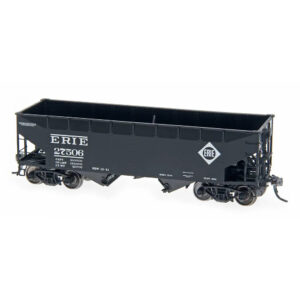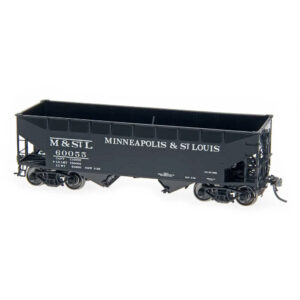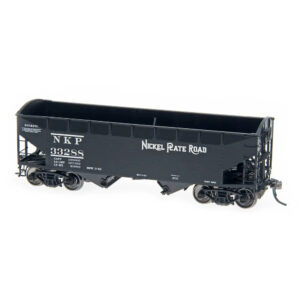AAR Alternate Standard 2 Bay Hopper
Prototype Information
The AAR (Association of American Railroads) Alternate Standard 2-Bay Hopper was a widely used freight car design developed to transport bulk commodities such as coal, gravel, sand, and other aggregates.
In the 1920s and 1930s, the AAR sought to standardize freight car designs to improve interchangeability and efficiency across North American railroads. The Alternate Standard 2-Bay Hopper was one of these standardized designs, featuring two bays for bottom discharge of cargo. The design was intended to provide a balance between capacity, structural integrity, and weight efficiency for smaller bulk loads.
These hoppers were commonly built from the 1930s through the 1950s, with both steel and composite (wood-steel hybrid) construction. They were favored for short-haul and regional transport, particularly in industries that required frequent unloading at multiple locations. Railroads and private shippers used these hoppers for coal, cement, and industrial minerals.
Showing all 3 results
-

Intermountain HO AAR Alternate 2 Bay Hopper Erie
$31.00 Select options This product has multiple variants. The options may be chosen on the product page -

Intermountain HO AAR Alternate 2 Bay Hopper Minneapolis & St. Louis
$31.00 Select options This product has multiple variants. The options may be chosen on the product page -

Intermountain HO AAR Alternate 2 Bay Hopper Nickel Plate Road “Arch End”
$31.00 Select options This product has multiple variants. The options may be chosen on the product page



